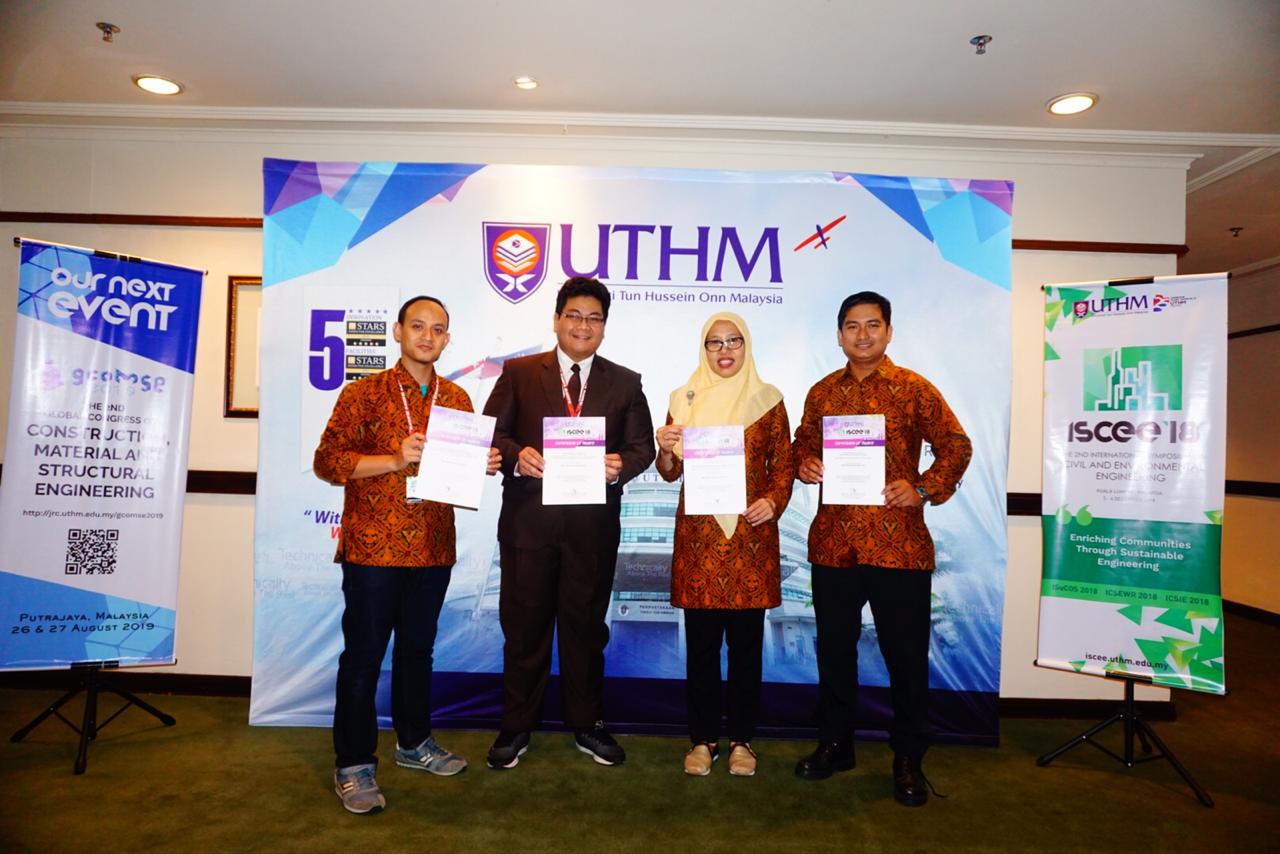Innovations are essential to improve railroads in Indonesia. A lecturer of Department of Civil Engineering of Universitas Muhammadiyah Yogyakarta (UMY) Dian Setiawan, S.T., M.Sc. examined a mixture of scrap rubber and asphalt for ballast layers which can increase speed of a passing train and its safety. His research entitled ‘Scrap Rubber and Asphalt for Ballast Layer Improvement’ achieved the best paper award at the International Conference on Sustainable Infrastructure Engineering (ICSIE) 2018 held in December in Kuala Lumpur, Malaysia.
The research, funded by Office of Research, Publication, and Community Service (LP3M) of Universitas Muhammadiyah Yogyakarta (UMY), revealed that the use of scrap rubber and asphalt for the ballast layer was firstly undertaken in Indonesia.
“Asphalt has been applied for highways. The notion emerged as an effort to escalate resilience of track structures so that the speed of a passing train can increase,” explained Dian in an interview on Wednesday (26/12).
The scrap rubber utilized in the research was gained from motorized vehicle tires cut into two groups of sizes. Besides, the mixture of the scrap rubber and asphalt was tested using Universal Testing Machine (UTM) at an engineering laboratory of UMY to discover stress and strain of the ballast layer. The test finding showed that the value of vertical deformation was obtained based on the number of changes in the height of the test object due to the vertical loading process. The scrap rubber can increase the value of vertical deformation because it could enhance the elasticity of the ballast layer. On the other hand, the addition of asphalt in the ballast mixture as a binder can improve the stiffness of the ballast layer. The use of scrap rubber and asphalt can reduce the value of material abrasion in the ballast layer significantly. Indeed, the use of scrap rubber and asphalt has a positive role against ballast durability in rail track structures.
“Railways are susceptible to damage. For example, ballast is a material is easily crushed due to rain, erosion, and land subsidence. Based on the research, the use of 2% of asphalt and 10% scrap rubber can raise the ballast durability to be 28% or 478 kPa (kilopascals) and the stiffness, so that the train can add the number of passengers and coal load. The more durable the railways, the faster the train speed. In Indonesia, train speed is normally only 70 km/h, whereas it can be 400 km/h in other countries since they use slab tracks requiring fantastic development costs. Thus, this research attempted to leverage the ballast to improve the speed from 70k km/h to 200 km/h,” asserted Dian.
Additionally, Dian informed that it is in progress a patent on the mixture of asphalt and scrap rubber for railroad construction and it will be promoted to public. “Many positive developments of the tested material durability were found during the one-year research project. I hope that the idea can obtain the patent. I also would like to thank UMY for providing the research grants and I wish that further research on the similar topic can be conducted so that UMY can pioneer the train development of Indonesia, particularly its railways,” expected Dian.







